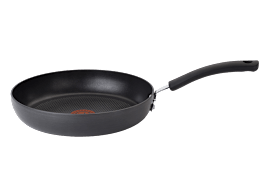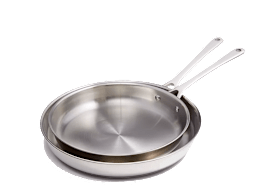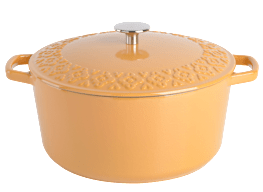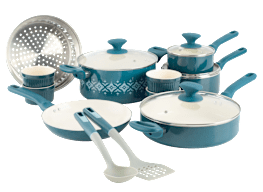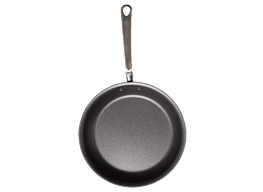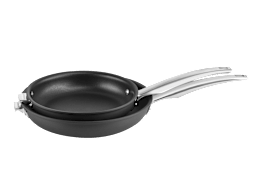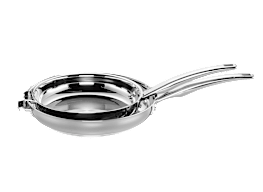Best Cookware for Induction Cooktops
Good news: Almost all your favorite cookware will work with an induction appliance
When you shop through retailer links on our site, we may earn affiliate commissions. 100% of the fees we collect are used to support our nonprofit mission. Learn more.
When you take a look at CR’s ratings of induction cooktops and induction ranges, it’s stunning how well they do in our tests. The top-rated induction cooktop gets an almost perfect score, and the ranges aren’t far behind. Yet despite their impressive performance, induction appliances make up only a small slice of the market. Why?
We’re digging into that dichotomy, but one possible explanation is that folks aren’t sure their favorite pots and pans will work on these not-so-newfangled cooktops. That’s because induction cooking surfaces work differently from those on traditional gas and electric cooktops and ranges. Instead of burners or electric-resistance elements that warm up, the heat on an induction cooktop is created by an electromagnetic coil that sits beneath the glass top. This coil creates a magnetic field that transfers current directly to magnetic cookware, causing it to heat up.
Stainless Steel Cookware Sets
Stainless steel is an alloy that comes in different grades. Most—but not all—food-grade stainless steel pans are induction-compatible, so make sure you check the label on the box or the description on the website before investing in a set.
Stainless Steel Frying Pans
Dutch Ovens
Most of the Dutch ovens in our tests are made of enameled cast iron, with the exception of a top-rated pan, which is made of enameled carbon steel. But both materials are induction-compatible.
Cast-Iron Frying Pans
Cast iron is ferromagnetic and compatible with induction, whether it’s coated enamel like a Dutch oven, or uncoated. Here’s one of each, but if you have a vintage model handed down by your family, that’s okay, too.
Carbon Steel Frying Pans
Carbon steel pans have properties similar to cast iron in that they can take high heat and are great for searing, but they weigh less. You can use any carbon steel pan on an induction cooktop. Restaurant chefs swear by them.

















